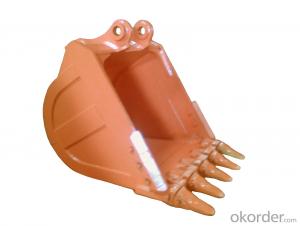Hitachi Solar Inverter
Hitachi Solar Inverter Related Searches
100w Solar Panel With Inverter Best Solar Panel Inverter 5000 Series Cast Aluminum Plate Portable Solar Panel Inverter First Solar Series 6 Module 12 Volt Solar Panel Inverter Plastic Solar Lanterns Buy Solar Panel Inverter Solar Panel Inverter Cost Solar Panel Without InverterHot Searches
Type Of Inverter For Solar Types Of Inverter For Solar Used Solar Inverter For Sale Inverter Size For Solar System Solar Edge Inverter For Sale 5kw Solar Inverter For Sale Solar Inverter For Sale Solar Inverter For Battery Solar Inverter For Split Ac Solar Inverter For Laptop Solar Inverter For Fridge Solar With Inverter Price Solar Inverter With 2 Battery Solar Inverter Price In China Best Solar Inverter In China Solar Inverter Price In Dubai Solar Inverter Price In Uae Solar Inverter Price In Kenya Solar Inverter Price In Kerala Solar Hot Water Collectors For SaleHitachi Solar Inverter Supplier & Manufacturer from China
Okorder.com is a professional Hitachi Solar Inverter supplier & manufacturer, offers integrated one-stop services including real-time quoting and online cargo tracking. We are funded by CNBM Group, a Fortune 500 enterprise and the largest Hitachi Solar Inverter firm in China.Hot Products
FAQ
- Yes, a solar inverter can be used with a generator as a backup power source. The solar inverter can be connected to the generator's output, allowing it to convert the generator's AC power into usable DC power for charging the batteries or powering the solar energy system. This setup ensures uninterrupted power supply during periods of low solar generation or in case of power outages.
- Yes, a solar inverter can be used in commercial or industrial applications. In fact, they are commonly utilized in these settings to convert the direct current (DC) generated by solar panels into alternating current (AC) that can power various electrical equipment and systems. Solar inverters enable efficient and reliable integration of solar energy into commercial and industrial operations, contributing to cost savings and environmental sustainability.
- The role of a synchronization circuit in a solar inverter is to ensure that the inverter is synchronized with the utility grid. This circuit monitors the frequency and phase of the grid and adjusts the inverter's output accordingly to match the grid's characteristics. By synchronizing the inverter with the grid, it allows for safe and efficient power transfer, prevents disruptions to the grid, and enables the inverter to operate in parallel with other power sources.
- A solar inverter handles voltage fluctuation during cloud cover by continuously monitoring the output voltage of the solar panels. When cloud cover causes a decrease in sunlight and therefore a drop in voltage, the inverter adjusts its operation to maintain a stable output voltage. It does this by employing various techniques such as maximum power point tracking (MPPT) to optimize power generation, and voltage regulation to ensure the output voltage remains within the desired range. This helps to minimize the impact of voltage fluctuations and ensure the solar system continues to operate efficiently even during cloud cover.
- A solar inverter handles voltage dips and swells by constantly monitoring the incoming voltage from the solar panels and adjusting its output accordingly. When there is a dip in the grid voltage, the inverter compensates by injecting additional power into the system, whereas during voltage swells, it reduces its power output to prevent damage. This dynamic response ensures that the inverter maintains a stable and consistent voltage output, protecting both the solar system and the connected appliances.
- The role of a power limiter in a solar inverter system is to regulate the amount of power that is fed into the grid from the solar panels. Solar panels generate electricity based on the available sunlight, and at times, they may produce more power than what is needed or allowed by the grid. In such cases, a power limiter acts as a control mechanism to limit the amount of power that can be injected into the grid. It ensures that the power output from the solar panels remains within the specified limits, preventing overloading or destabilization of the grid. The power limiter continuously monitors the power output from the solar panels and adjusts it accordingly to match the grid requirements. It does this by intelligently controlling the inverter, which converts the direct current (DC) generated by the solar panels into alternating current (AC) suitable for grid integration. By limiting the power fed into the grid, a power limiter helps in maintaining grid stability, preventing voltage fluctuations, and minimizing the risk of power surges or blackouts. It also ensures compliance with local regulations and grid codes related to solar power generation. Additionally, a power limiter can provide additional functionalities such as grid synchronization, anti-islanding protection, and remote monitoring. These features enhance the safety, reliability, and overall performance of the solar inverter system. Overall, the presence of a power limiter in a solar inverter system is crucial for maintaining a balance between power generation and grid stability, optimizing the utilization of solar energy, and ensuring a safe and efficient integration of solar power into the electrical grid.
- The potential risks of fire or explosions from a faulty solar inverter include short circuits, electrical arcing, overheating, and component failure. These issues can lead to an accumulation of heat, sparks, or electrical discharges, which may ignite flammable materials nearby or cause an explosion. It is crucial to regularly inspect and maintain solar inverters to mitigate these risks and ensure the safe operation of the system.
- No, not all solar inverters are compatible with all solar panels. The compatibility between inverters and panels depends on factors such as voltage, power output, and technology. It is important to ensure that the inverter and solar panels are compatible to optimize the performance and efficiency of the solar energy system.















































